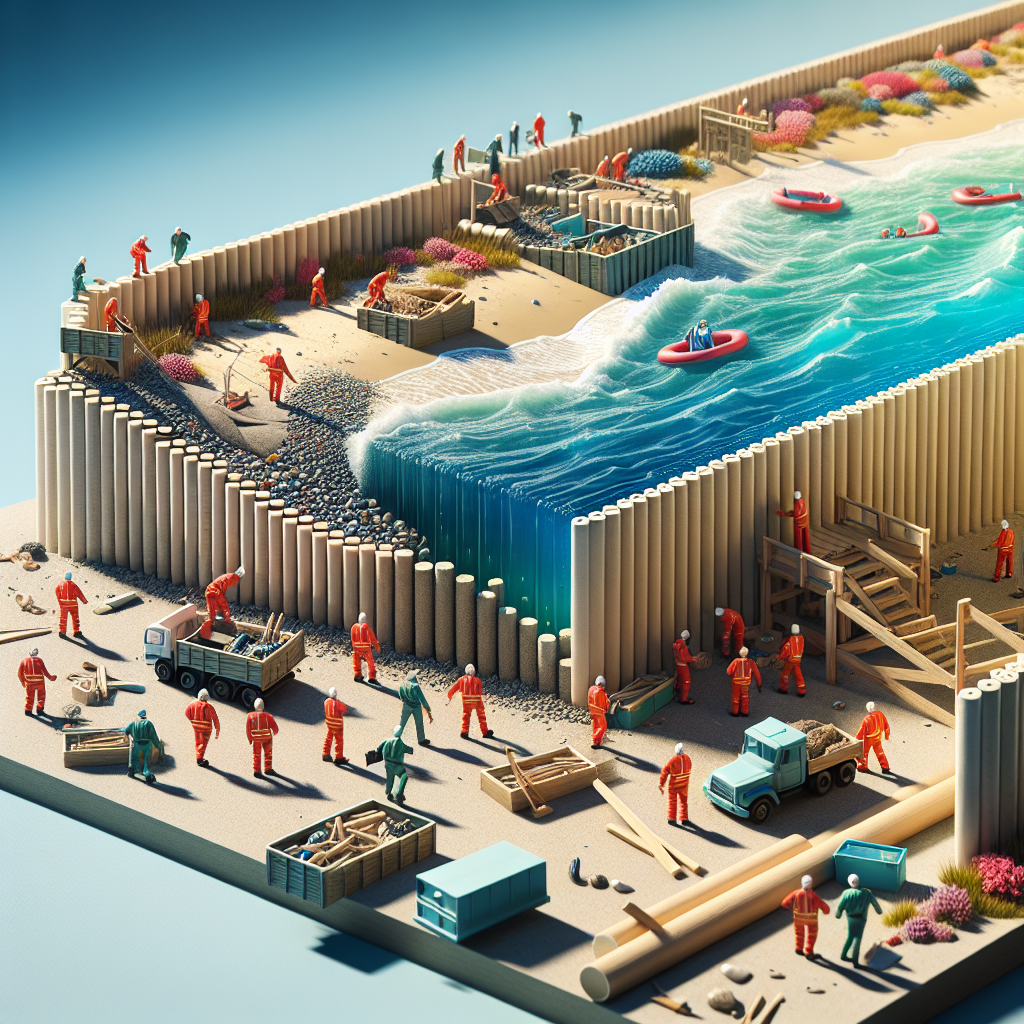The Battle Between Nature and Coastal Engineering
Imagine a world where humans and nature are in a constant tug-of-war, and you'll find yourself at the heart of coastal engineering. Coastal engineering is the field that deals with the design and construction of structures along coastlines to combat erosion, flooding, and other natural processes. This practice has been around for centuries, but it has gained significant attention in recent years due to climate change and rising sea levels. Coastal engineering projects can be found all over the world, from the Netherlands' intricate system of dikes and levees to the seawalls of Miami. The primary goal is to protect human settlements and infrastructure from the relentless forces of the ocean, but the methods and implications of these projects are often subjects of heated debate.
On one hand, coastal engineering is seen as a necessary measure to protect communities from the devastating impacts of natural disasters. Hurricanes, tsunamis, and storm surges can wreak havoc on coastal areas, causing loss of life and billions of dollars in damage. By constructing barriers, breakwaters, and other protective structures, engineers aim to mitigate these risks and provide a sense of security to those living near the coast. In places like New Orleans, where Hurricane Katrina left a lasting scar, the importance of robust coastal defenses cannot be overstated.
However, the opposing viewpoint raises concerns about the environmental impact and long-term sustainability of coastal engineering projects. Critics argue that these structures can disrupt natural ecosystems, leading to unintended consequences such as habitat loss and changes in sediment transport. For example, seawalls can prevent the natural migration of beaches, leading to increased erosion in other areas. Additionally, the focus on hard engineering solutions often overlooks the potential of more sustainable, nature-based approaches like restoring wetlands and mangroves, which can provide natural buffers against storm surges.
The debate over coastal engineering also touches on issues of social justice and equity. Wealthier communities often have the resources to invest in extensive coastal defenses, while poorer areas may be left vulnerable to the impacts of climate change. This disparity raises questions about who gets to be protected and who bears the brunt of environmental risks. As sea levels continue to rise, these questions become more pressing, and the need for inclusive and equitable solutions becomes increasingly urgent.
Despite the challenges and controversies, coastal engineering remains a vital tool in the fight against climate change. As the world grapples with the realities of a warming planet, the demand for innovative and effective coastal protection strategies will only grow. Engineers and policymakers must work together to balance the needs of human communities with the health of natural ecosystems, finding solutions that are both effective and sustainable.
In the end, the battle between nature and coastal engineering is not one that can be easily won or lost. It is a complex and ongoing struggle that requires careful consideration of the many factors at play. By acknowledging the diverse perspectives and working towards a common goal, we can hope to create a future where both humans and nature can thrive along our coastlines.

